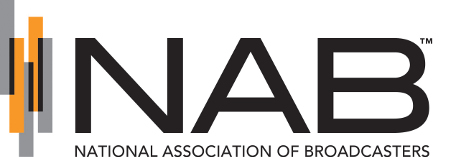NAB to Microsoft: Don’t Be Sad, Four Out of Five Ain’t Bad
WASHINGTON—NAB told the FCC this week in comments responding to a Petition for Rulemaking filed by Microsoft regarding changes to Television White Space rules that it can support four out of five of the technology company’s requested modifications, which the association wishes to see as part of “a focused Further Notice of Proposed Rulemaking.”

Agreement centers on higher power limits for TVWS operation in rural areas, antenna height, allowing geofenced and fixed TVWS operations on mobile platforms and use of TVWS for narrowband Internet of Things IoT applications.
However, NAB urged the commission to postpone consideration of a rule change sought by Microsoft to authorize higher power operations on first-adjacent channels to TV broadcasters until the transition to Next Gen TV services has advanced.
NAB agrees with a Microsoft proposal to boost TVWS radiated power in rural areas from the EIRP limit of 40 dBm to 42 dBm in areas where at least half of the allocated TV channels within the intended band of operation are unused for TV service and available for white space use and a fixed white space device is sufficiently separated from protected operations.
The association also agrees with the company’s proposal to allow TVWS operation from antennas 500 meters above average terrain subject to a couple of restrictions to protect broadcasters. Those include adjusting the distance separating the antennas from protected services in line with existing commission methodology and a special coordination requirement for antennas higher than 250 meters.
In accepting Microsoft’s geofencing proposal, NAB noted that existing rules allow geofenced operations for Mode II personal/portable TVWS devices. The company is seeking “an analogous rule that would permit fixed TVWS operations on platforms (such as vehicles) that operate within a pre-defined area on channels determined [to be] using the interference protection rules that would apply throughout that area,” NAB said in its filing.
These devices would be required to check their location every 60 seconds while in operation and could not be located on aircrafts, ships or satellites, the filing noted. They also would be restricted from using channel availability information when within 1.6 km of the boundary defined for their operation.
Get the TV Tech Newsletter
The professional video industry's #1 source for news, trends and product and tech information. Sign up below.
Related to rules supporting TVWS use for narrowband IoT applications, the tech giant is seeking several rule changes to allow simultaneous narrowband transmissions so long as they do not “aggregate to produce total conducted power levels above what the Commission’s rules presently allow in a 6 MHz-wide channel,” the NAB filing noted.
Proposed protections include a listen-before-talk requirement, a ban on continuous video or audio transmission with a maximum transmission limit of 10 seconds per hour and a limit on total power density in any 100 kHz slice of a 6 MHz channel “to no more than existing limits for TVWS operations adjusted for that bandwidth,” the filing said. Subject to these protections, NAB supports the company’s proposal, it added.
However, NAB disagrees with Microsoft’s proposal to authorize higher power operations on first-adjacent channels to TV broadcasters. “Microsoft bases this proposal in part on the assumption that Next Gen TV receivers ‘will be more robust to adjacent-channel interference than the ATSC 1.0 receivers’” the agency previously analyzed. Further, the need to upgrade to new DTV receivers as part of the Next Gen TV transition offers an opportunity to “reduce their susceptibility to adjacent-channel interference,” the association recounted from the Microsoft petition.
In its comments, NAB rejected these assertions, saying “there is no evidence that Next Gen TV receivers will prove less susceptible to interference than existing receivers.” Even if this were true, the Microsoft proposal is “premature” until the installed base of DTVs is replaced with 3.0 receivers, NAB said.
The association added that requiring consumer electronics manufacturers to build receivers that are more robust to accommodate TVWS operation on channels adjacent to those in use by broadcasters is “unsupported.”
Including this proposal in the proceeding will only create delays, NAB said, adding that the agency can take up the proposal “when the Next Gen transition has made further progress and Microsoft’s assumptions regarding receivers can be verified or disproven.”
Phil Kurz is a contributing editor to TV Tech. He has written about TV and video technology for more than 30 years and served as editor of three leading industry magazines. He earned a Bachelor of Journalism and a Master’s Degree in Journalism from the University of Missouri-Columbia School of Journalism.

